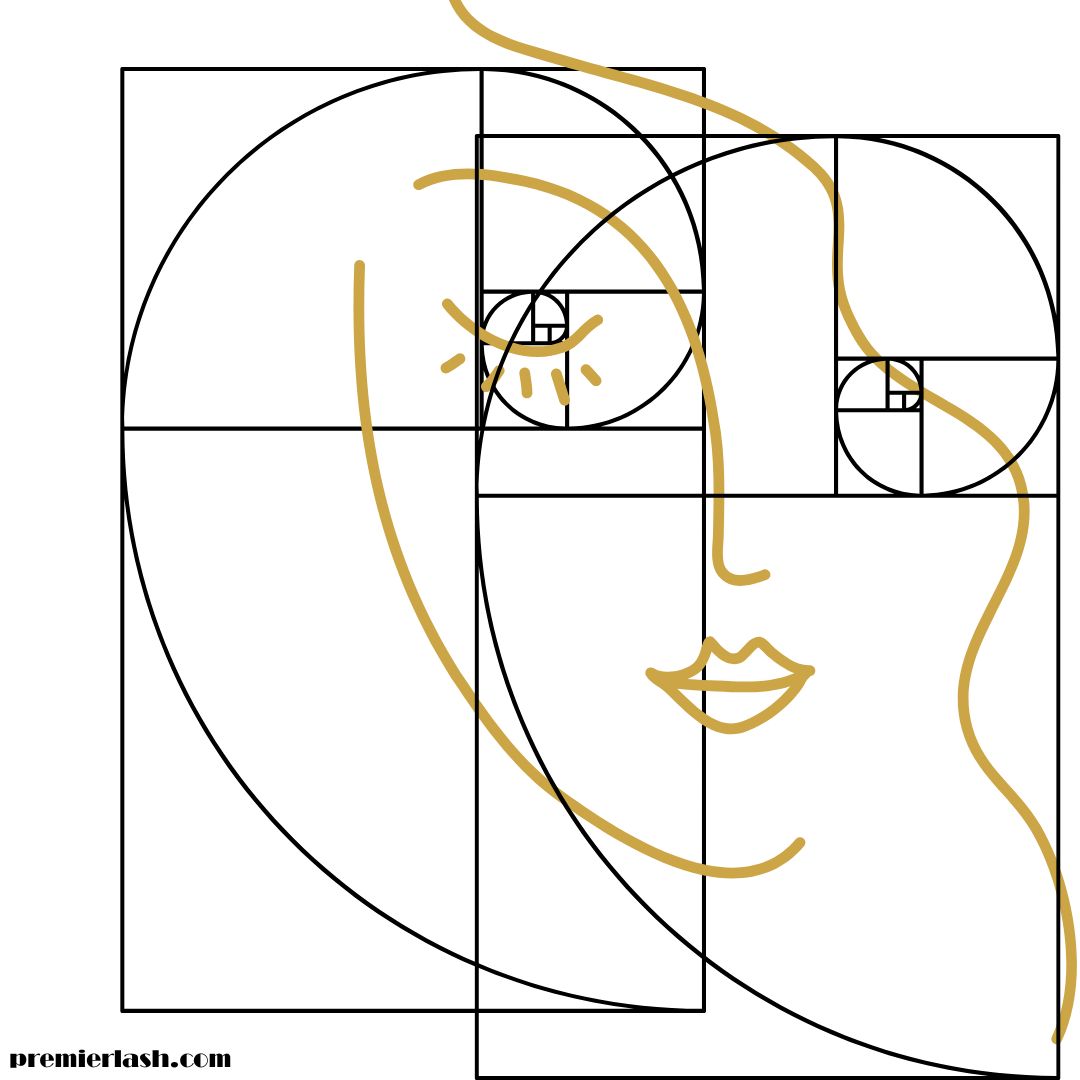The Golden Ratio ...
Oct 7th 2025
The Fibonacci sequence is a mathematical ratio that appears frequently in nature, and it aligns with what is often perceived as "ideal" beauty in human faces and forms. When applied to lash extensions and beauty, the Fibonacci sequence helps achieve symmetry, balance, and natural proportions. Here's how the Fibonacci ratio (also known as the Golden Ratio, approximately 1.618) influences beauty in technical terms, particularly when applied to the face:
1. Golden Ratio and Facial Proportions
The Golden Ratio can be applied to measure ideal facial proportions, which are often subconsciously interpreted as more attractive. Some key examples of how the Fibonacci sequence applies to facial structure include:
- Facial Width to Height: The ideal width of the face compared to its height follows the ratio of 1.618. If this proportion is close, the face is often perceived as balanced and symmetrical.
- Eye Placement: The distance between the eyes, and from the eyes to other facial features, also aligns with the Golden Ratio. If you measure from the center of one eye to the other and compare it to the width of the face, the ratio ideally approaches 1.618.
- Lip to Nose Ratio: The distance from the top of the lip to the bottom of the nose, compared to the width of the nose, aligns with the Fibonacci sequence.
In lash mapping, these ratios help ensure that lash designs enhance the natural proportions of the face in ways that feel harmonious.
2. Lash Length and Eye Shape
Lash extensions often follow a gradient, with shorter lashes in the inner corners and longer ones toward the middle or outer corners. The Fibonacci sequence helps in determining a gradual, smooth transition of lash lengths. Technically, this is why lashes that follow the Fibonacci series (e.g., 8 mm, 9 mm, 11 mm, 13 mm, etc.) create a natural curve that mirrors the curvature of the eyelid and enhances the eye without looking artificial.
- Fibonacci Curve and Eye Flow: The eye naturally follows curves and shapes that are based on the Fibonacci spiral. In lash mapping, placing lashes according to this curve emphasizes the eye's natural flow and beauty. It creates a smooth, flowing lash line that draws the viewer’s eye toward the focal point (usually around two-thirds of the eye, as discussed earlier), enhancing the overall look.
3. Symmetry and Balance
Human brains are wired to find symmetrical faces more attractive, and the Golden Ratio is often used to describe facial symmetry. By applying the Fibonacci sequence to lash extensions:
- Symmetry: Lashes can be mapped symmetrically to each eye, ensuring that both sides of the face appear balanced.
- Proportionality: Lashes are placed in a way that complements the overall symmetry of the face, ensuring that they align with the natural proportions of the eyes, cheekbones, and brows.
4. Dynamic Proportions
In beauty, dynamic proportions governed by the Fibonacci sequence ensure that makeup, lashes, and other enhancements fit seamlessly into the natural form of the face. For example:
- Eyebrows and Lash Mapping: The arch of the brow often aligns with the Golden Ratio, peaking at a point where it is approximately two-thirds of the way along the eyebrow from the inner corner. Lash extensions that complement this ratio create a harmonious balance between the lashes and the brow line.
- Face Symmetry in Lashes: Lash length should gradually increase in a Fibonacci-like pattern, ensuring that the lashes fan out naturally without harsh or abrupt changes in length.
5. Fibonacci Spiral and Eye Focus
The Fibonacci spiral, another manifestation of the sequence, can be overlaid on the eye and face to map out natural focal points. The eye naturally gravitates toward specific areas based on this spiral, which is why applying the longest lashes in the areas that align with the spiral (roughly 1.618 of the eye’s width) creates a pleasing, balanced look.
- Emphasizing the Eye: By following the spiral, the lash artist can place longer lashes in a way that naturally draws attention to the eye and creates a subtle but powerful visual impact. This creates a flow that feels inherently right to the human brain.
6. Lash Layers and Proportions
When working with layered lashes (i.e., top, middle, and bottom layers), the Fibonacci sequence helps balance the length and density across each layer. This ensures that the layers complement each other and the overall design remains proportional. The gradual increase or decrease in length follows a Fibonacci progression, creating a natural, flowing lash line that enhances the shape of the eye and face. In short, the Fibonacci sequence is important because it provides a mathematical foundation for creating lash designs and beauty enhancements that are harmonious with the natural proportions of the face.

